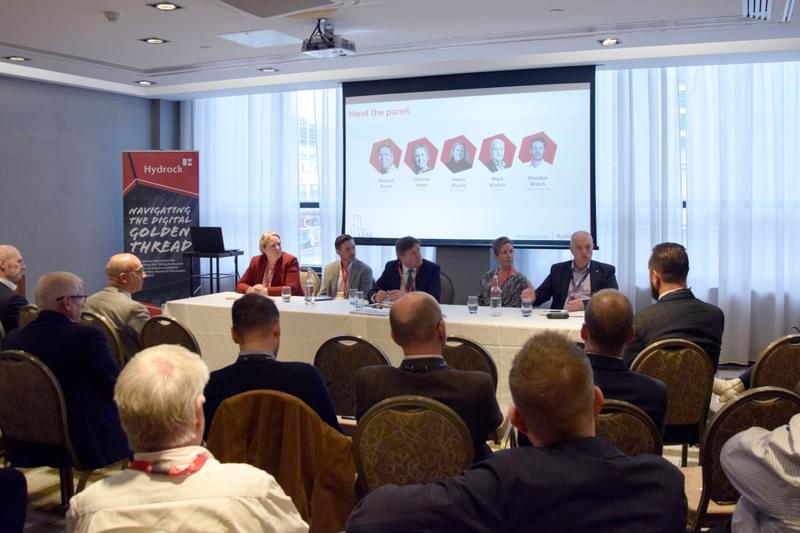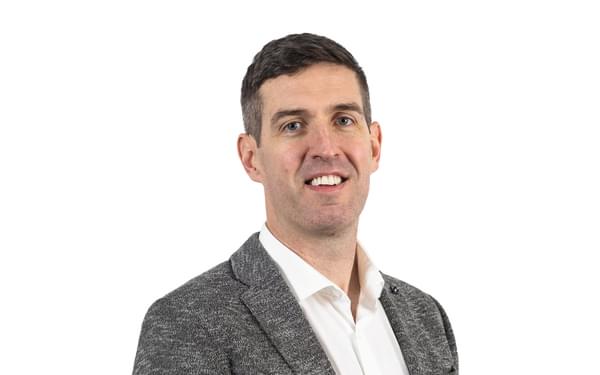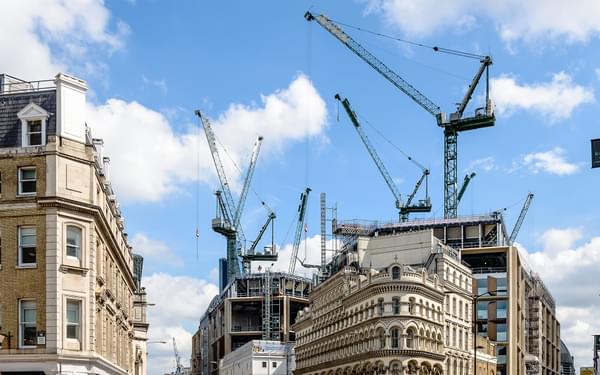Back to Articles
Our Time to Lead session: The healthcare sector and the Building Safety Act
31st Oct 2023
At our 'Time to Lead' conference on 18 October 2023, our break-out session dedicated to the healthcare sector asked what the Building Safety Act (BSA) means for this sector.
Chaired by Richard Darch, CEO at Archus, our healthcare sector panel comprised of Helen Sturdy, NHS head of construction procurement and Procure 23 framework lead; Victoria Head, commercial and performance director at Archus; Sheldon Walsh, partner at Ryder Architecture; and Mark Walker, Hydrock’s healthcare lead.
There were two main strands to our debate around how the industry can rise to the challenge: New build and existing stock.
1. What does the Building Safety Act mean for the healthcare sector?
Change is something that never comes easily. But the BSA is a huge step forward for building safety in the UK and will create a safer environment for everyone, including patients and staff in the healthcare sector.
Our panel agreed that healthcare providers have a vital role to play in implementing the BSA. By complying with the new safety requirements, they can make sure that their buildings are safe for everyone who uses them.
The BSA has a number of implications for the healthcare sector. For starters, it means that all healthcare providers with buildings that meet the height and occupancy thresholds will need to comply with the new safety requirements.
The new Building Safety Regulator (BSR) oversees and enforces these new safety requirements. The BSR will have a number of powers, including the requirement for building owners to carry out safety inspections and remediation works.
Representing the greatest part of what is a culture shift, the BSA introduces a new system of accountability for building safety.
That’s a lot to take in. More so when the stakes are this high.
2. A myriad of challenges for the NHS
Richard kicked-off the debate by addressing the elephant in the room — money. He asked the panel, “How's the healthcare sector going to address the issue and build the case for safety, alongside other competing priorities, into the business case so the impact is quantified, not just in terms of cost, but also in terms of value?”
“It’s key that we don’t think about the BSA in a silo,” answered Victoria. “It will absolutely impact and improve on backlog maintenance and decarbonisation. Together, those three are the three biggest priorities that the NHS, and all those in the room, are having to face and I believe there’s a ‘sweet spot’ that will benefit all three.”
“I think it starts early on — money always has an impact. The longer you leave it, the more risk there is associated with getting it wrong,” added Mark. “Building safety for me isn’t just about fire safety, it also touches on ventilation, water, power and all inter-connected design areas including MEP, structural engineering and sustainability among them. It’s about bringing it all back to ‘complete design’ before you move into construction.”
Sheldon agreed with the points made around bringing together all the strands and added digital to the mix. He also reflected on tackling the challenging question around cost and investment. “I’ve observed how the sector often responds too reactively to short term needs,” he began. “The NHS Trusts which are most successful have a clear clinical strategy underpinning them that informs the estates strategy and then you layer over the decarbonisation strategy — over a long period of time you know you’re building the right things, in the right place. You can also challenge yourself to build less.”
What does it mean commercially and from a quality perspective? Helen stated she’s seeing case studies coming through from the 21 tier one contractors on Procure 23 evidencing the positive impact of early design team collaboration on NHS projects.
This has emphasised the importance of early project engagement and buildability. Not having the right information leads to problems with build programmes for new builds, and planning not being granted. The right data will de-risk your programme.
“You can save money,” Helen affirmed. “It comes down to getting the right people in the room and getting it right from the start."

3. Tackling initiatives in tandem across healthcare estates
A delegate asked whether the panel believes the healthcare sector is sufficiently prepared to tackle BSA, backlog maintenance and decarbonisation together, and is truly ready to think through those issues.
Victoria opened by saying the sector is doing “okay” but there’s room for improvement. The BSA will engender a much more sustainable approach to building as part of repurposing and revitalising the NHS estate. "But I'd like to see expertise brought in from other sectors, reap the benefits from that, and raise the bar and move the sector forward again," she added.
In Sheldon’s experience, we have to start somewhere. “It’s a journey and we have a lot of the ingredients in place already,” he began. “It’s not a systemic change of how we design and build assets but a change in mindset to ensure that beyond doubt what we’ve built is what’s handed over — that’s the golden thread — and we’ve got all the skills and capacity within the industry to do that. Dame Judith Hackitt’s message earlier was loud and clear: it’s up to us to do that.”
4. Risk-based design for healthcare estates
The BSA is more relevant to healthcare buildings than wider perception dictates. One question from a member of the audience employed by a smaller NHS trust raised the question of proportionality of applying the BSA.
Although the height is the current limiting factor for in-scope buildings, it will apply in some way to all healthcare buildings, and all the new buildings as part of the New Hospitals Programme (NHP).
Richard highlighted the direction of travel. “If you’re not in NHP you’re in good company,” he said. “We also need to focus on the rest of the NHS estate and the journey that those Trusts are on. The notion of the ‘big hospital’ as a solution is beginning to be questioned because of the re-purposing and also the move to split the hospital more into a campus — increasing the amount of healthcare that can be delivered in different facilities. I believe the smaller hospital buildings will become the norm in delivering better patient healthcare outcomes,” he explained.
Helen highlighted that there's uncertainty around the 'inter-connectivity' of buildings, in terms of patient transfer across different facilities on an estate, which could have an impact of BSA compliance. "It's a question I've asked the BSR for clarity around recently," she noted.
The ongoing relationship between technical standards in the healthcare sector and the new building safety regime is a challenge that needs attention.
For Mark, “Healthcare needs risk-based design because, half the time, Health Technical Memorandums and Health Building Notes don’t fit the actual space,” he explained. “That’s highly-relevant to smaller hospital schemes too, you need a risk-based approach. Even though such schemes will likely be out of scope, you have to be confident when you go to Building Control that you’re compliant with legislation to save you from being knocked back,” he added.

5. Set standards early during hospital construction
Helen admitted that the BSA is arguably not the top priority across NHS estates at present given the number of things the Trusts are currently contending with. "They are aware of its importance, but certainly need help and guidance from the industry," she said.
Ryder has a safety team who fulfil the principal designer role, which was operationally introduced in response to the Building Safety Bill.
For Sheldon, there’s a clear message. “Let’s not be complicit in a two-tier system. Let’s forget about ‘in-scope’ and focus on design and culture change in the industry,” he rallied.
An audience member raised the question whether the healthcare sector presents a huge opportunity, with the NHS representing a single end client, to bring together a coalition to define a systematic way of working out a consistent and proportional approach to designing buildings under the new BSA regime.
Helen stressed the importance of sharing best-practice and highlighted the different working groups within P23 that strive to bring consistency across the supply chain. She asked, "Are Hydrock going to instigate bringing the people who are here today, together again for a follow-up?"
We will. You can count on it, Helen!
The overwhelming agreement from our panel, and those in the audience, was that by working together, we'll create a safer future for everyone.
Key takeaways
- It’s not just about fire safety. The BSA impacts all aspects of designing buildings across a hospital estate.
- Find the 'sweet spot' for tackling backlog maintenance, building safety and decarbonisation together. It'll save money in the long run.
- Get the design team in place early. That's key to getting buildability and value from a healthcare project.
- Don't dwell on proportionality. Forget about 'in-scope' and focus on design and culture change in the industry. It's the right thing to do.
- Don't wait around for others to provide the answers. It's up to the industry to get it right.
- Clear and accurate building information is golden.
Stay informed with our dedicated newsletter featuring news and updates, the latest talking points and everything else you might need to know about the Building Safety Act. Sign up here.
And to stay up-to-date on all our latest healthcare news and projects, sign up to our dedicated newsletter here.

















